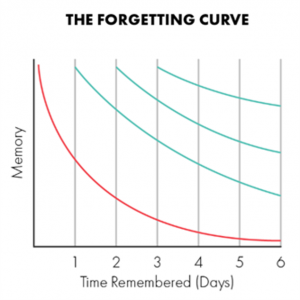Spaced Practice involves studying the same information over multiple sessions rather than cramming it all into one. Through doing this pupils review material in short bursts over a long period of time rather than in a single massed amount of time. This gives their minds time to form connections between the ideas and concepts so that knowledge can be built upon and easily recalled later.
Highlighted by Ebbinghaus Forgetting Curve whereby if pupils learn something once, they quickly forget it. However if they revisit the material at regular intervals (such as days, weeks, months) pupils can retain the information for longer and the forgetting gets slower.

Ultimately some forgetting is important as it allows us to relearn more and relearning becomes easier with repeated attempts. Through spaced practice pupils can enhance the consolidation of material, and each time forgetting occurs, effort is needed to recall the information making it more meaningful.
Regular spaced practice also allows the context to change, providing multiple pathways and links to form around core knowledge. It enables learners to add missing information, remedy the damage of time to long-term memory and signal to the brain the knowledge is worth knowing.
Strategies to implement spaced practice:
- Flashcards
- Regular low stakes testing of previous topics
- Topic tests with questions across multiple topics
- Review material at regular intervals
- Delayed homework tasks
Here are some more examples Spaced practice